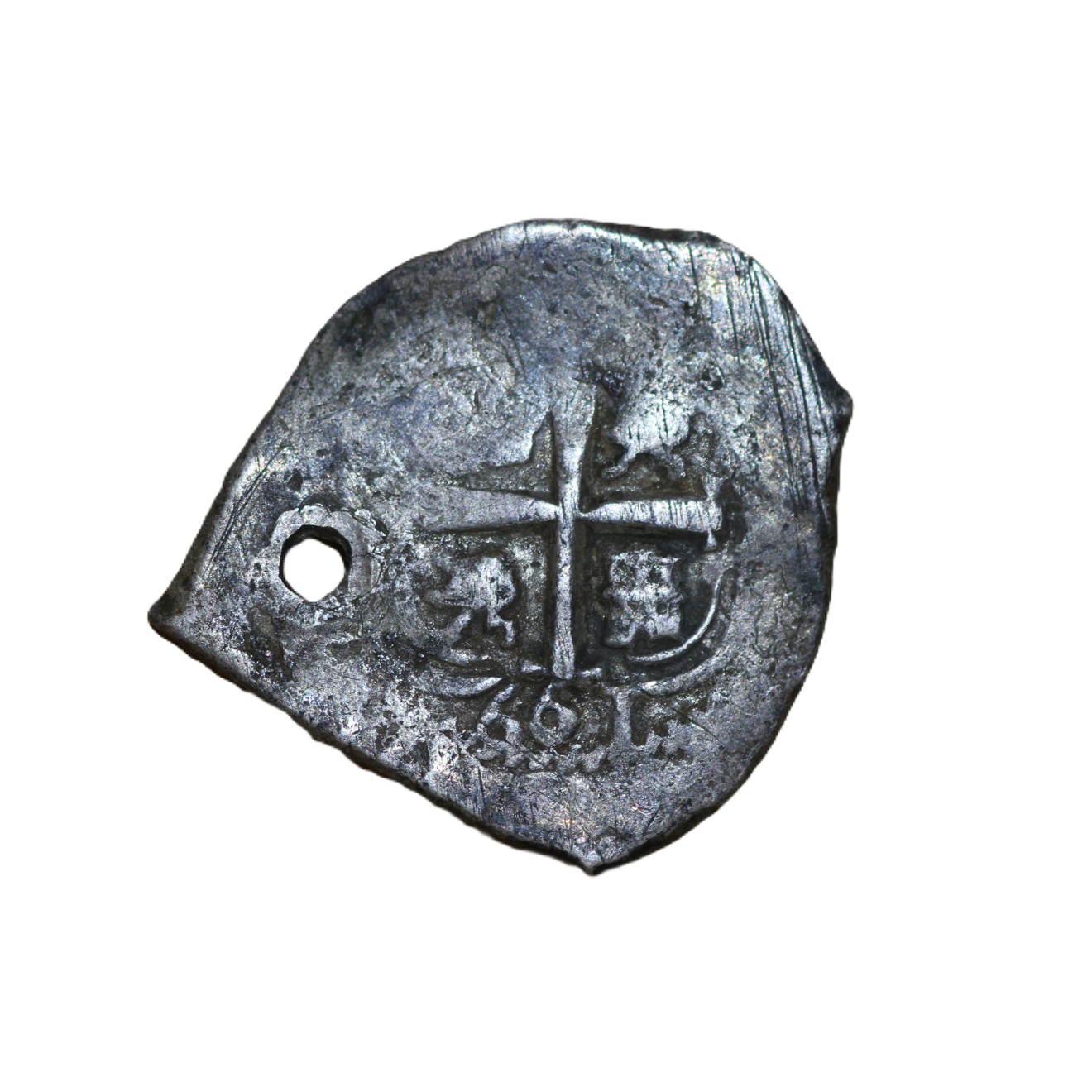

1 Real (cob)
Bolivia
166?
KM# 23
Composition: Silver .931
Weight: 3.23g
Diameter: 20.8mm
Thickness: 1.3mm
Ruler: Charles II - King of Spain
House: Habsburg
Born 1661 - Died 1700


|
1 Real (cob) Bolivia 166? KM# 23 Composition: Silver .931 Weight: 3.23g Diameter: 20.8mm Thickness: 1.3mm Ruler: Charles II - King of Spain House: Habsburg Born 1661 - Died 1700 |
|
Potosí was founded as a mining town in 1545 by Spain. Potosí is at the foot of the mountain, Cerro Rico (rich mountain), in Bolivia. This mountain is the world's largest silver deposit, producing an estimated 60% of the world's mined silver from 1550-1600. The obverse displays a cross with castles and lions in each quadrant, with date below. The reverse has pillars and the letters PLV SVL TRA for the national motto "Plus Ultra" (further beyond), and date below. |
Charles II was King of Spain from 1665, until his death in 1700. Charles was the last Spanish monarch from the House of Habsburg. He died childless, which led to the War of the Spanish Succession. |